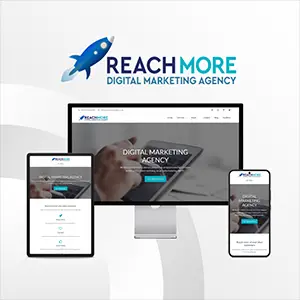Click here to get this post in PDF
This article contains affiliate links. For more info, see disclosure.
By Michael McKown
If you’ve ever found yourself browsing a website and clicking on the “About” link in the menu, you’re not alone. That seemingly innocuous tab can actually be a goldmine of information, not just for the curious but for anyone looking to do business with or invest in the company behind the website. Let’s dive into how an About page can significantly add value to a website.
First off, think about the last time you visited a new restaurant or considered buying from an unfamiliar online store. What did you do? Odds are, you checked out their About page. Why? Because it’s here that companies get to tell their story. This isn’t just an opportunity to share where and when they started; it’s a narrative that can trace the evolution of the business from a mere idea to a market player. A good company history doesn’t just list dates; it weaves a tale of growth, challenges overcome, and milestones achieved. This story can make the brand feel more human, more relatable. It’s like meeting the person behind the counter before you decide to buy their sandwich.
For example, I was once involved with writing text for the website for a home appraiser in Los Angeles, California. I wanted to include his stories — unusual things that happened on the job. There were several incidents. One involved being surprised outdoors by a pair of rottweiler dogs, who chased him around the house. In another story, a husband scheduled a visit but hadn’t told his wife. The appraiser arrived and the man told him to begin his work. And he surprised the wife who was in the shower. It humanizes the person and makes them memorable.
How many websites have you visited in the last year that were forgettable? Being remembered is a good thing.
Now, let’s talk about the people behind the scenes. An About page often introduces the owners or key executives. This isn’t just about putting faces to names; it’s about building trust. When you see who runs the show, you get a sense of the leadership style, the vision, and the values that steer the company. For instance, if the CEO has a background in sustainable practices, you might trust that the company’s environmental claims are more than just marketing fluff. It’s like when you meet someone; knowing their background gives you a clue about what to expect from them.
Moving on, the role the business has played over the years can be a compelling part of the About narrative. This isn’t just about listing products or services but highlighting the impact. Has the company been pivotal in shaping an industry? Have they pioneered a new technology or perhaps supported local communities in significant ways? This aspect of the About page can transform customer perception from mere consumers to participants in a larger story. It’s like learning that the coffee shop you frequent has been supporting fair trade for decades; suddenly, your morning coffee feels like it’s part of something bigger.
Dedication to customers or clients is another cornerstone of a robust About page. Here’s where companies can showcase their commitment to service, quality, and customer satisfaction. Whether it’s through testimonials, mission statements, or even fun anecdotes about customer interactions, this part of the page reassures visitors that they aren’t just another number. It’s like when a shopkeeper remembers your name; it makes you feel valued, right?
Finally, all these elements together engender confidence in the company. In an era where trust in businesses can be shaky, a well-crafted About page acts as a silent ambassador. It’s not just about boasting of achievements but about being transparent. This transparency can be about the challenges faced, how the company responded to crises, or its stance on modern issues. When potential customers or partners feel they know the company’s ethos, they’re more likely to engage with it. It’s like knowing the chef at your favorite restaurant; you trust the meal will be good because you trust the chef.
The About page is not just a menu item; it’s an invitation to tell your story. It’s a strategic tool for engagement and trust-building. It’s where the heart of the company beats, visible to all who care to look. By providing a comprehensive, engaging, and honest look at who they are, what they stand for, and how they’ve grown, businesses can turn casual browsers into loyal patrons or even advocates. So, go to your website and click the About link. What does yours say?
If it’s not informative and entertaining, then you have some work to do. Your next step should be to contact Ghostwriters Central, Inc., to turn that opportunity into a valuable gem. The company was founded in 2002 and has capably served thousands of clients since then. Your first consultation is free, and all you need to do is click on that link. Thanks for reading.
You may also like:
What Is The Difference Between A Landing Page And A Website
5 Ways To Increase Traffic To Your Business Website
Image source: elements.envato.com

